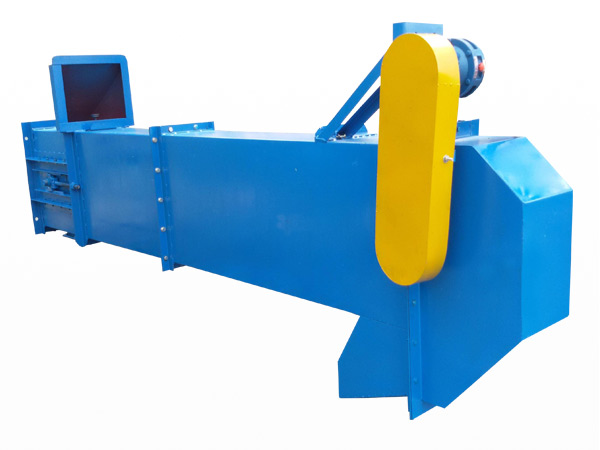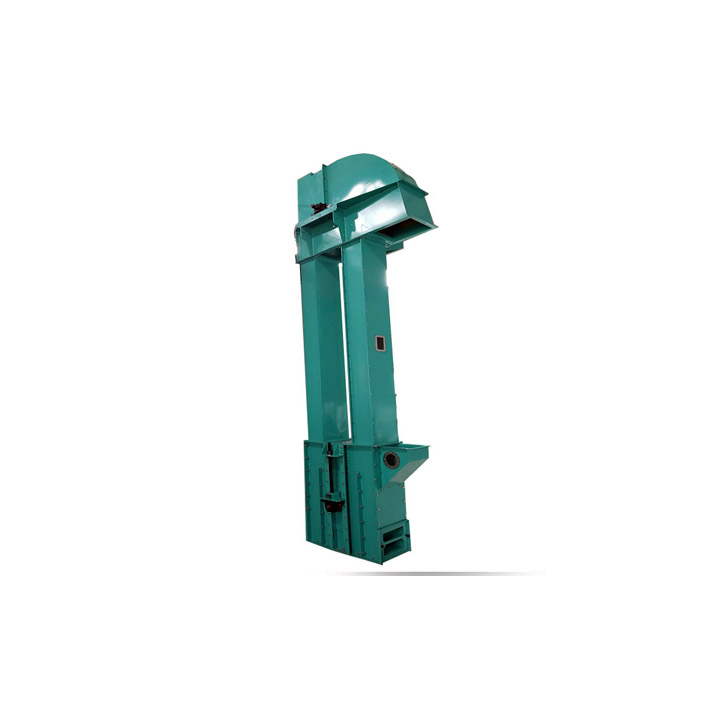
Chain Elevator
Professional bulk material lifting solutions, dedicated to grain, chemical, building materials and other industries, durable, low maintenance, improve efficiency by 30%+, support customization
| Lifting height | 60m |
| Conveying capacity | 5.4-365 cubic/hour |
| Bucket capacity | 5.2~10L |
| Material temperature | ≤250℃ |
| Motor power | 5.5~7.5KW |
What is a chain elevator?
Chain Elevator is a device used for vertical conveying of granular, block or bulk materials. It is widely used in various industries, such as mining, fertilizer, grain, chemical industry, cement, etc. Chain elevator drives the lifting bucket through the chain to carry out vertical conveying of materials. It has high conveying efficiency and strong adaptability, and is suitable for handling various heavy materials that are difficult to convey.
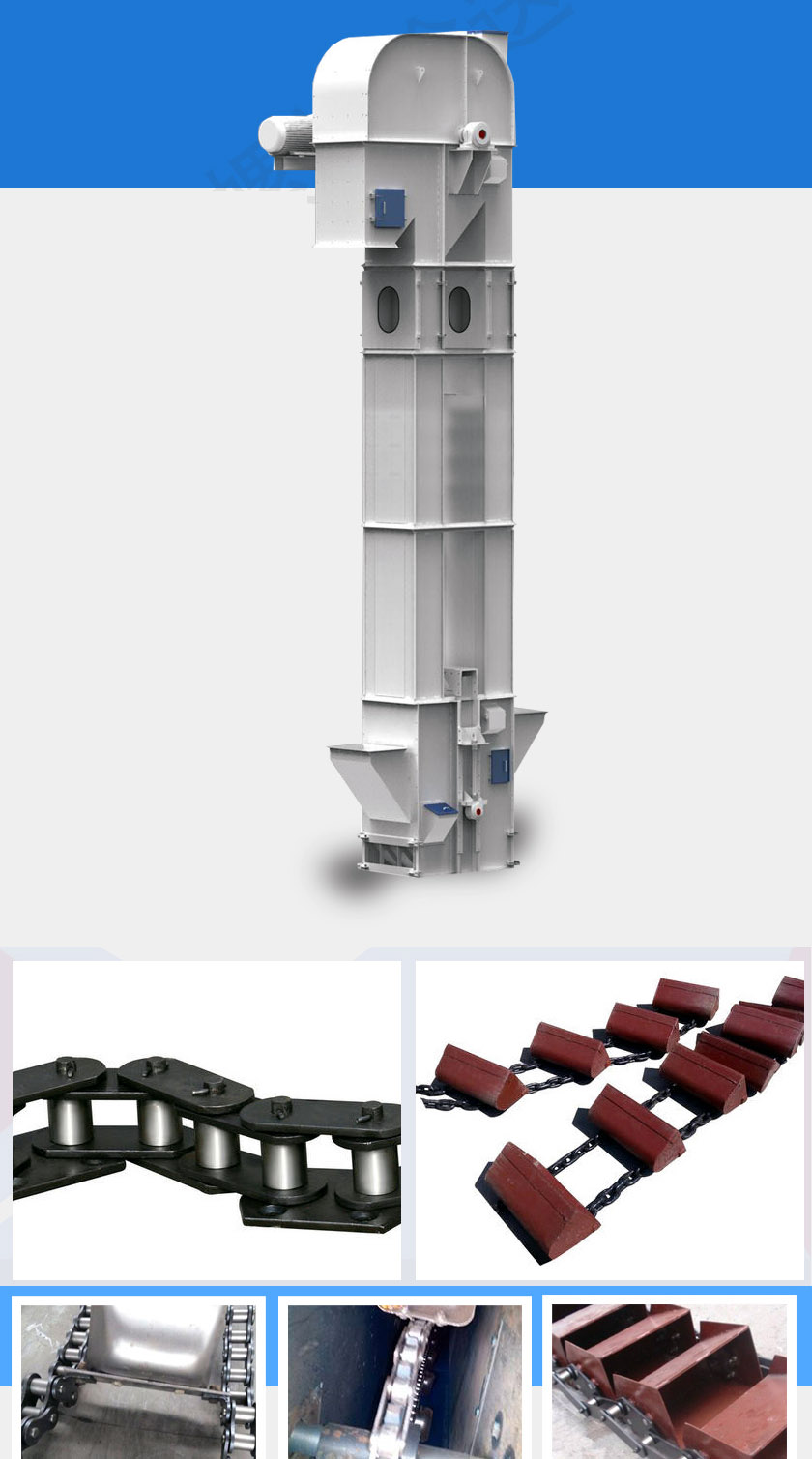
What are the advantages of Chain Elevator?
High Load Capacity & Durability: Chain elevators use high-strength steel chains that can handle heavy, abrasive, or large-sized materials (e.g., coal, ore, cement). Their robust construction ensures long-term reliability, even in harsh industrial environments.
Large-Scale Material Handling: They offer high-capacity vertical lifting, with some models handling up to 800 m³/h, making them ideal for mining, cement, and grain industries.
Energy Efficiency: Modern chain elevators use gravity-induced discharge and low-speed chains, reducing power consumption by 30–45% compared to belt-driven alternatives.
Low Maintenance & Long Lifespan: Inflow feeding minimizes material collision, reducing wear on buckets and chains
What are the applications of Chain Elevator?
Chain Elevator is widely used in many industries, mainly used to lift granular, block or some relatively irregular materials. The following are some typical application areas:

Mining industry: used to lift block materials such as ore and coal.
Cement industry: used to lift raw materials such as limestone, clinker, coal powder, mineral powder.
Grain processing: used to lift granular materials such as rice, wheat, corn.
Fertilizer industry: lift various fertilizers (such as compound fertilizer, nitrogen fertilizer, phosphate fertilizer, etc.).
Chemical industry: used to lift powdered and granular chemical raw materials.
Food industry: such as used to lift light materials such as sugar, salt, grains.
How does Chain Elevator work?
The working principle of Chain Elevator is based on the cooperation of chain and lifting bucket. The chain of the equipment is driven by an electric motor and a reducer to drive the lifting bucket to rise and fall vertically along a fixed track. The material enters the hopper through the feed port and is discharged through the discharge port after the lifting process.
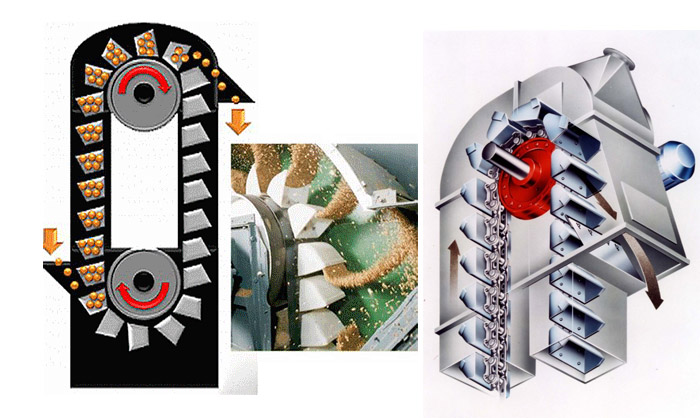
Chain Elevator Parameters
| Model | Max Feed Size (mm) | Capacity (Ton/Hour) | Lifting Speed (m/s) | Belt Width (mm) | Lifting Height (m) |
| TD160 | 25 | 5.4-16 | 1.4 | 200 | <40 |
| TD250 | 35 | 12-35 | 1.6 | 300 | <40 |
| TD315 | 45 | 17-40 | 1.6 | 400 | <40 |
| TD400 | 55 | 24-66 | 1.8 | 500 | <40 |
| TD500 | 60 | 38-92 | 1.8 | 600 | <40 |
| TD630 | 70 | 85-142 | 2 | 700 | <40 |
What are the structural components of Chain Elevator?
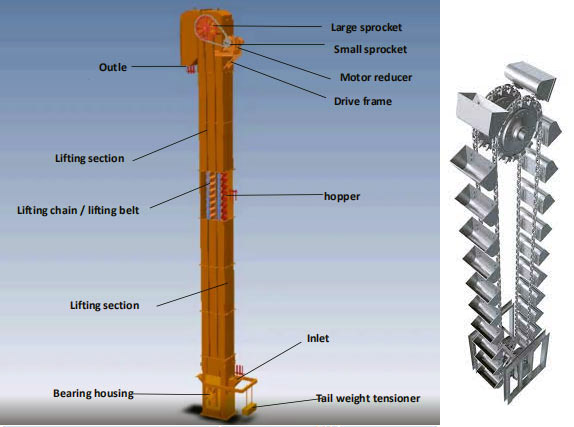
Casing: The casing is usually made of steel plate or other durable materials to protect the internal components from the external environment.
Chain system: Chain is the main transmission medium, usually made of alloy steel, with high strength and wear resistance.
Elevator bucket: used to hold materials, usually steel plate or aluminum alloy material, with high strength and wear resistance.
Drive device: including motor, reducer, coupling, etc., to provide power to drive the chain.
Support wheel and guide rail: support the smooth operation of the chain and ensure the stability of the elevator.
Feed and discharge port: The feed and discharge port are where materials enter and discharge, and usually adopt a sealing design to prevent material leakage.
Chain Elevator customer case

Case 1: A coal mining company - coal lifting
Customer background:
The coal mining company is located in the mountainous area and mainly mines coal. Coal has a high density and a large number of block materials. The mining area needs to lift coal from the underground mine to the ground for subsequent processing and storage. The coal lifting process needs to be efficient, stable and bear a large load.
| Lifting materials | Lifting height | Lifting volume |
| Coal (lump, high density) | 50 meters | 100 tons/hour |
Solution:
We provide customers with customized chain hoists, which use alloy steel chains and are equipped with reinforced hoppers to ensure that the equipment can operate stably under high loads and harsh environments. The chains and hoppers are made of wear-resistant materials, which are particularly suitable for the lifting of coal block materials.
Effect:
The hoist operates stably at a height of 50 meters, meeting the high-intensity work requirements.
The lifting capacity reaches 100t/h, which fully meets the production requirements of the mining area.
The equipment failure rate is low, the lifting efficiency is increased by 30%, and the equipment maintenance and downtime are reduced.
Case 2: A cement plant - limestone lifting
Customer background:
The cement plant needs to lift limestone from the raw material bin to the production line during production. The limestone particles are large and heavy, and the lifting height is 40 meters. Since the production line requires a large amount of limestone, this requires the hoist to have sufficient conveying capacity.
| Lifting materials | Lifting height | Lifting volume |
| Limestone (larger particles, high hardness) | 40 meters | 80 tons/hour |
Solution:
According to customer needs, we designed a chain elevator suitable for large-particle materials. The elevator uses an oversized wear-resistant hopper and high-strength alloy steel chain to bear the weight of large pieces of limestone. A special anti-blocking device is designed to ensure that the material will not get stuck during the lifting process.
Effect:
The elevator runs stably at a height of 40 meters and can withstand a lifting volume of 80t/h.
The limestone particles are smoothly lifted through the oversized hopper, avoiding the problem of clogging.
The lifting efficiency is greatly improved, the production line runs more smoothly, and the equipment downtime is reduced.
Case 3: A grain processing plant - corn lifting
Customer background:
The grain processing plant is responsible for corn processing and transports corn from the warehouse to the processing workshop. Since corn particles are light and easy to fly, the equipment needs to be able to prevent material waste and environmental pollution. The lifting height is 25 meters, requiring the equipment to be not only efficient, but also safe and environmentally hygienic.
| Lifting materials | Lifting height | Lifting volume |
| Corn (lighter grains) | 25 meters | 50 tons/hour |
Solution:
We customized a chain elevator with a fully enclosed design for the customer. The hopper adopts a sealed structure to prevent corn from flying. The chain adopts standard high-strength materials to ensure that the corn particles are not damaged during the lifting process and the conveying volume is stable.
Effect:
The elevator successfully avoids the problem of material flying and reduces the loss of corn.
The lifting volume is 50t/h, which meets the production needs of the grain processing plant.
The equipment runs stably, environmental protection requirements are met, pollution is reduced, and production efficiency is improved.
How to select Chain Elevator?
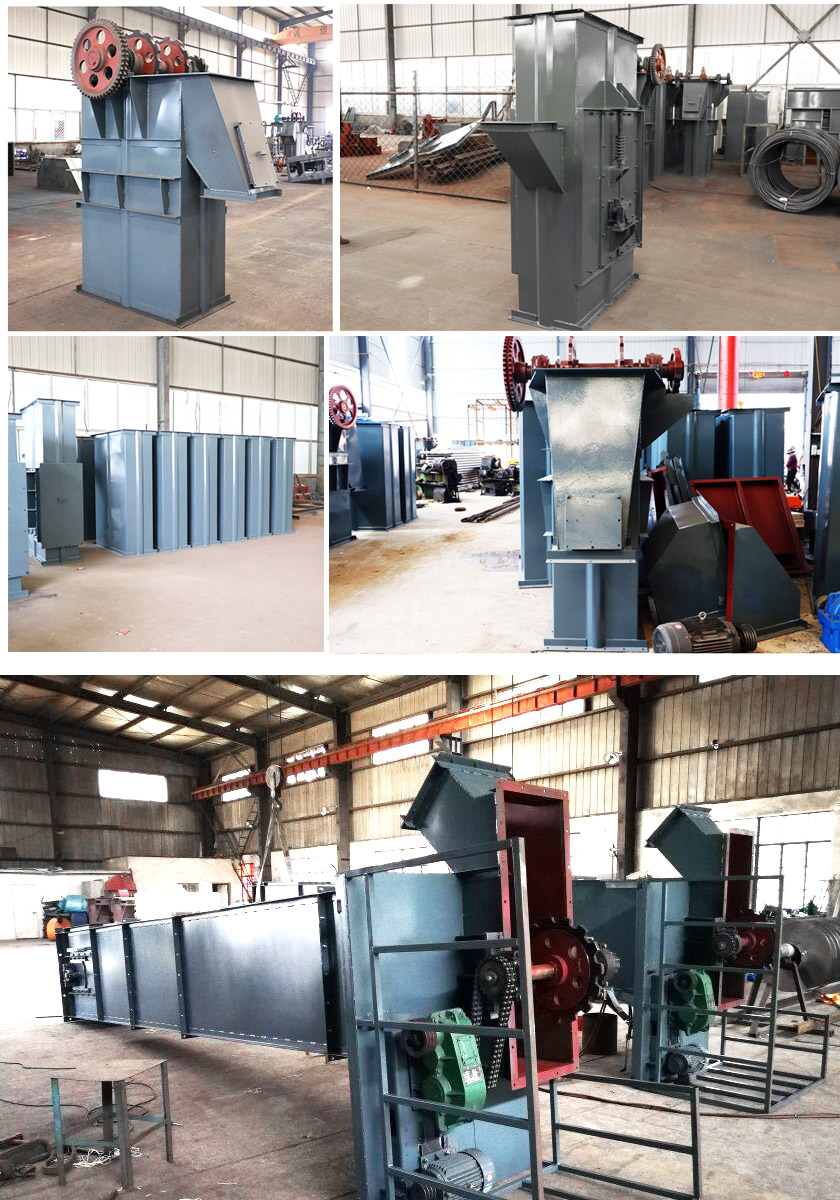
1. Material characteristics
Granular, powdery, block materials: Chain elevators are suitable for these materials, especially block materials (such as coal, ore, crushed stone, etc.) and granular materials (such as cement, fertilizer, grain, etc.). Sticky materials: If the material is sticky (such as wet clay, wet sand, etc.), you need to use a specially designed hopper, such as an anti-stick hopper, to prevent the material from sticking to the hopper or chain and causing blockage.
Material density: The density of the material determines the load requirements of the elevator. For heavy materials (such as ore, coal, etc.), you need to choose a higher strength chain and a larger capacity hopper.
Material temperature: If the temperature of the conveyed material is high (such as hot cement, steel raw materials, etc.), you need to choose a high temperature resistant chain, hopper and sealing design.
Material corrosion: For highly corrosive materials (such as fertilizers, chemical powders, etc.), you need to choose corrosion-resistant chains and hopper materials, such as stainless steel or coated materials.
Material humidity: Materials with high humidity may adhere to the equipment, causing blockage or wear. Therefore, when selecting, you need to consider designs with self-cleaning functions or heating devices to reduce adhesion and blockage.
2. Lifting height
Low lifting height (10-20 meters): suitable for small enterprises or medium and low-rise buildings, the equipment selection is relatively simple, and the main focus is on the conveying capacity and material characteristics.
Medium lifting height (20-40 meters): suitable for medium-sized enterprises or places with high material conveying needs, it is necessary to select a more powerful drive system and a higher strength chain.
High lifting height (above 40 meters): requires a stronger chain, drive device and reinforced structural design, and the price and power requirements of the equipment will increase accordingly.
3. Lifting capacity (conveyance)
Low lifting capacity (10-30t/h): suitable for small-scale or medium-to-low-volume production environments, suitable for small cement plants, grain processing plants, etc.
Medium lifting capacity (30-100t/h): suitable for medium-sized production lines, commonly seen in medium-sized mines, fertilizer plants, food processing plants, etc.
Large lifting capacity (above 100t/h): suitable for large production lines, especially large cement plants, mines, chemical plants, etc., requiring equipment with stronger pressure resistance and large-capacity hoppers.
4. Chain and drive system
Carbon steel chain: suitable for general materials, relatively economical price, and bears general load.
Alloy steel chain: suitable for high-load and high-strength applications, such as mines and heavy material transportation.
Stainless steel chain: used for material transportation in corrosion-resistant, high-temperature or special environments.
Wear-resistant chain: suitable for occasions where material particles are large and have greater friction, such as coal, ore, etc.
Drive power: Higher lifting heights and large conveying volumes usually require higher power motors (such as 5.5kW to 45kW).
Drive mode: Chain hoists can choose different drive modes, including direct motor drive, hydraulic drive, etc. Motor drive is the most common method, and hydraulic drive is suitable for more special applications.
5. Hopper design
Standard hopper: suitable for general granular materials, such as cement, grain, etc.
Enlarged hopper: suitable for materials with larger particles or higher density, such as coal, ore, etc.
Anti-stick hopper: used for wet or sticky materials to prevent material adhesion.
Anti-corrosion hopper: suitable for highly corrosive materials such as fertilizers and chemical materials, commonly using stainless steel or coated materials.
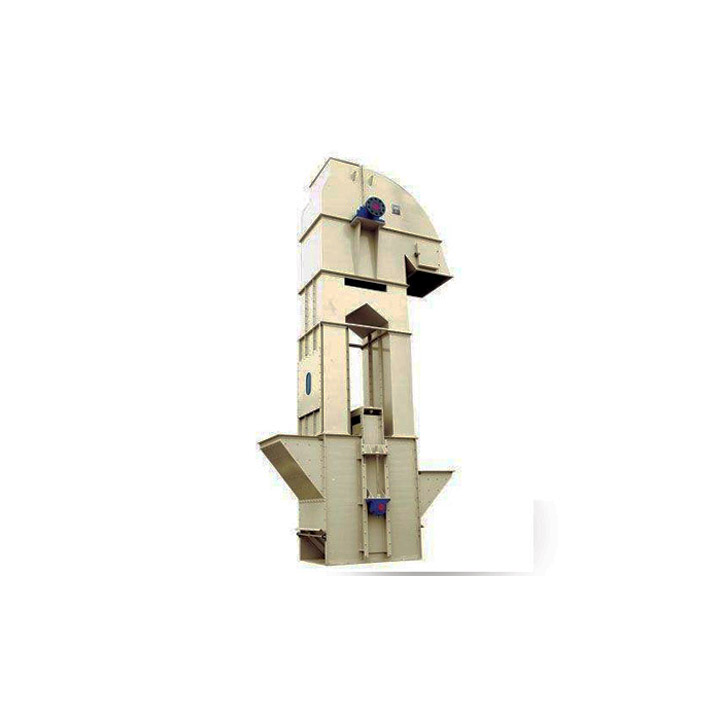 TH type chain bucket elevator
TH type chain bucket elevator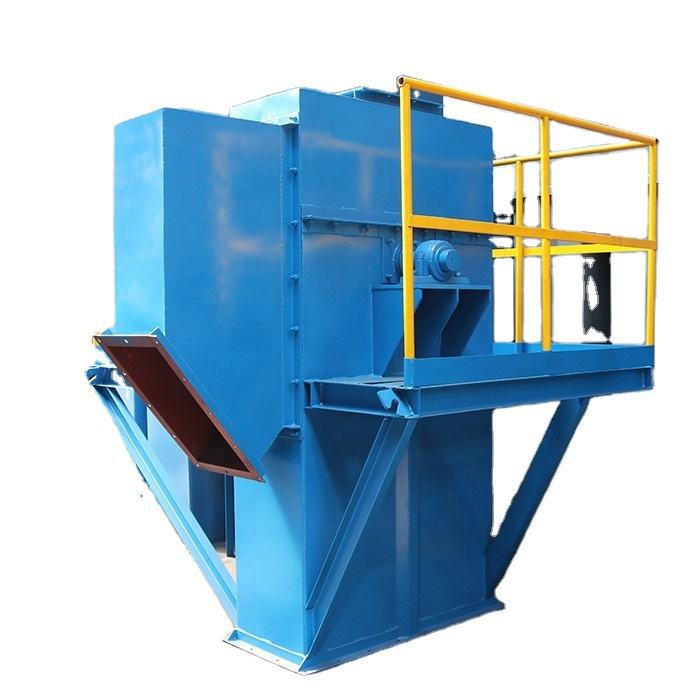 TH Chain Bucket Elevator
TH Chain Bucket Elevator